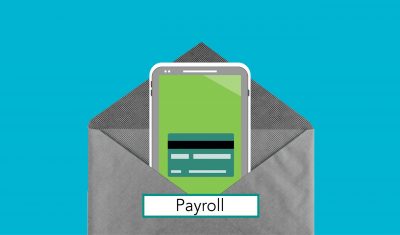It’s Important for small businesses and nonprofits to always have readily available financing such as a line of credit for payroll. The #1 reason why one opens a line of credit is to ensure you make payroll, on time. To have a happy and healthy workplace, you need to be able to pay your employees when their wages and salaries are due. Plus, missing or delaying payroll is actually illegal and can get your company into a myriad of troubles.
There are times businesses have run into payroll issues due to cash shortages. As a result, some companies are hit by high employee turnover, and in many cases, others are drawn into litigation that later cost them dearly.
Savvy business owners don’t joke around with their payroll. That’s why they go to any extent, even resorting to borrowing from banks, to compensate their employees duly. But the good news is that the availability of lines of credit (both small business and nonprofit lines of credit) have dramatically reduced the hassles and difficulties involved in making payroll on a shoestring budget.
An adequate cash backup plan such as a line of credit can help you weather any financial uncertainty that might hamper your ability to pay your workers and save you from any potential problem that might arise down the line.
Read on to learn how to use a line of credit to finance payroll, especially when you’re cash strapped.
What is a Line of Credit?
Gone are the days when businesses struggle to pay their workers due to cash flow difficulties. Today, the story has changed for good, thanks to lines of credit.
What’s a line of credit? A line of credit is a preset sum that banks or other lending institutions like Financing Solutions agree to lend to borrowers upon completing some paperwork. You can readily draw from the fund any time until you reach the borrowing limit. In other words, you can take out the money as needed until your limit is reached.
Every line of credit consists of a set amount that can be borrowed as needed, repaid, and borrowed again. However, the amount of interest or fees and the size of payments you will pay are set by the lender.
A line of credit can be secured or unsecured. Lines of credit are secured when they’re backed by collateral. In contrast, an unsecured line of credit is not backed by security but typically has a higher interest rate.
Then again, a line is often considered a type of revolving credit. Revolving credit or an open-end credit account is a financial arrangement that allows you to spend borrowed fund, repay it, and spend it again in a virtually never-ending, revolving cycle. 
It’s noteworthy that revolving accounts such as credit lines and cards are different from installment loans such as a mortgage, students, and car loans. Maybe next time we’ll discuss in detail the differences between them. But let’s highlight how a line credit can help you with payroll.
How Can a Line of Credit Help with Payroll?
There’s no denying the importance of staying ahead of trends concerning payroll financing. Not paying your workers when they’re supposed to be paid is the surest path to your business failure. Besides, one of the major reasons your employees work so hard is for them to receive their paycheck at the end of the day or month. Denying your workers adequate compensation for whatever reason can bring about frictions that might undermine your company’s credibility.
However, come rain or shine, a line of credit can help you finance your payroll. In addition, setting up a line of credit can be pretty fast and stress-free. Until recently, the only available options for a quick loan were cash advances from exploitative lenders.
Now, there’s an inexpensive alternative you can’t afford to miss: a line of credit! Business lines of credit allow businesses and nonprofits to quickly have access to credit in order to maintain a steady cash flow, make payroll, take advantage of opportunities, and cater to emergencies.
For instance, a credit line from Financing Solutions costs nothing to set up and nothing until used. In addition, no collateral or personal guarantee is required. However, you need a 650 personal credit score, and your business needs to do $400,000 per year in revenue. On the other hand, a nonprofit needs to be doing $200,000 per year in revenue. Sounds so great?
Is Your Business or Nonprofit in Need of a Line of Credit?
Ideally, businesses and nonprofits should always have a constant cash flow for their efficient operations, but unfortunately, it’s not always so. Unforeseen events can negatively impact organizations’ financial outlooks and make it difficult for them to reach their financial objectives.
Not having a cash backup plan to take advantage of opportunities or cater to emergencies can be very dangerous to your business. Smart business owners and nonprofit leaders always have a financial plan B to fall back on in case of emergencies. Planning for unexpected events will help you prepare for any financial eventuality and face it head-on.
At Financing Solutions, we provide an easy-to-setup unsecured business line of credit to small businesses and nonprofits. Our small business financing product is an excellent alternative to a traditional bank line of credit. In addition, the business line of credit with instant approval requires no collateral and personal guarantees, making it a great backup cash plan.




